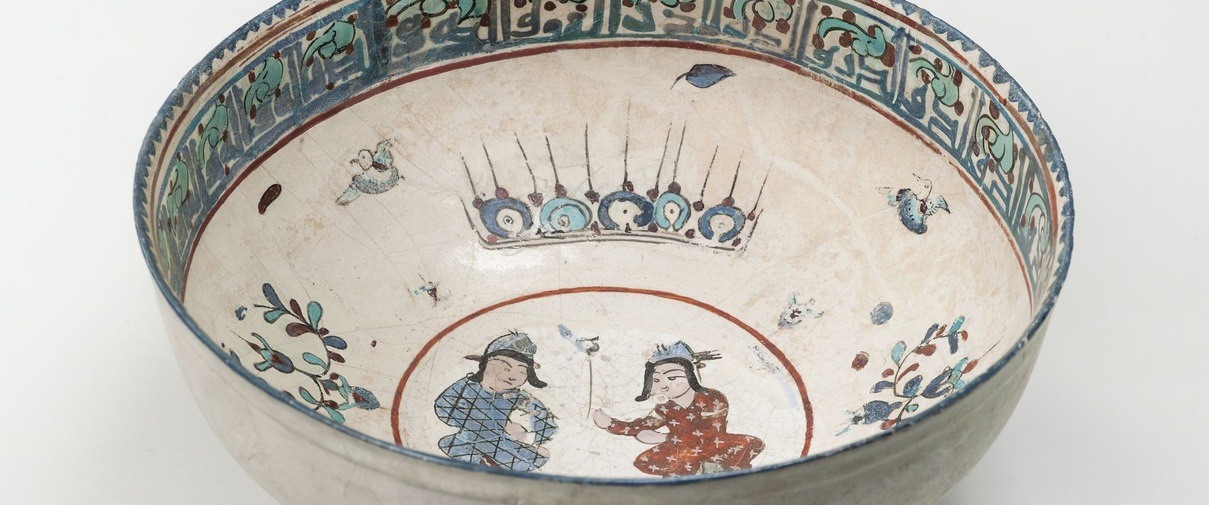Minai dish
Persian scenes
When we think of ceramics from the East, we usually think of China, but the Middle East also has a rich ceramic tradition. This twelfth-century bowl, for example, was made in the region that was referred to by the West as Persia until 1935, a name that conjures up fairytale images of the Arabian Nights, sultans, flying carpets and oriental princesses. The origins of the Persian Empire lie in the Middle East, with present-day Iran as its core. The region has a rich culture that has produced beautiful art. The collection of Islamic ceramics, donated to the Princessehof by Mrs. Hillegonda-Janssen, is a good example of this. This collection includes bowls, jars and jugs from the regions of Iran and Iraq. Some objects are beautifully glazed with a turquoise or gold-coloured decoration. There are even a few pieces from the pre-Islamic period, so from before 600.
The bowl depicted here dates from the heyday of Iranian ceramics, from 1100 to 1400. The piece is decorated in a technique called minai: it is covered with a white clay layer and decorated in the colours red, lavender, gold and turquoise. Minai ceramics were produced in Kashan, in what is now Iran. It was a costly process, because the object had to be fired twice. In addition, the glazes were applied in different ways, which made the process even more laborious. This may explain why the production of minai ceramics was short-lived. The first minai pieces date from the end of the twelfth century, but they were no longer made from the middle of the thirteenth century.
